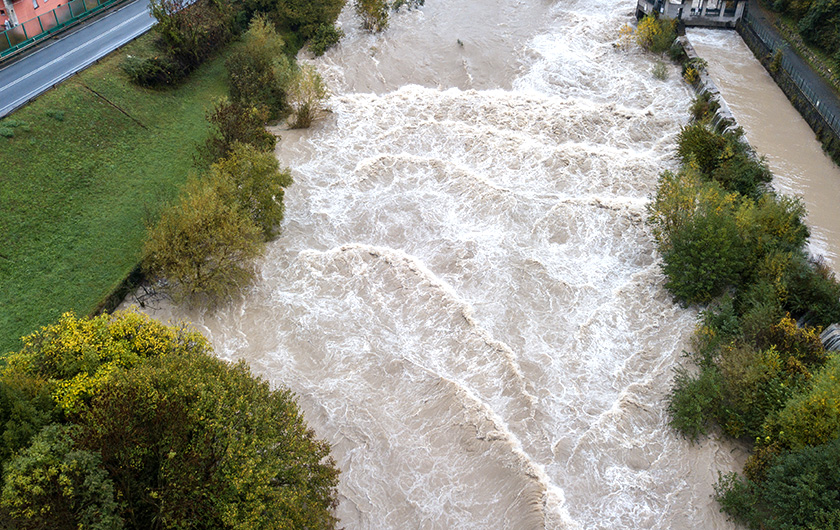
Curbing the damage caused by storms and localized torrential rain
Many news stories in Japan have covered storms and so-called "guerrilla rainfall" in recent years.
According to statistics from the Japan Meteorological Agency, there has been 27.5 more occurrences of precipitation 50mm or more per hour over the last 10 years – proving we now experience heavy rainfall more often than before.
Global warming is one factor said to have brought about these changes in the weather. The atmosphere carries more water vapor at higher temperatures. This is thought to cause abnormal weather conditions such as typhoons and localized torrential rain with heavy rainfall in a short period of time.
Storms and torrential rain bring significant damage to the surrounding areas. Rivers flood their banks, leaving buildings and roads submerged in water. Severe flooding can even bring danger to human life. Japan in particular has seen numerous cases of extreme weather occurring in succession. The heavy rain in northern Kyushu in 2017, the torrential rain across western Japan in 2018 and typhoon Faxai in 2019 have all had a devastating impact.
There is an urgent need to reduce the damage caused by these kinds of extreme weather conditions. One way to do this is to predict river flooding. In the past, officials monitored specified rivers known to have large basins, and issued flood warnings or alerts when needed. These efforts incorporated methods from river engineering and hydraulics, such as the "tank model" for predicting changes in water levels based on measured river flow rates. However, these methods can only provide accurate predictions if data has been measured and is up to date.
Technology has existed for some time to predict water levels using AI, although the power of this technology could not be effectively harnessed. This is because there wasn’t yet enough data on rainfall and water levels over the past few decades – or even the past few years.
In light of these issues, Fujitsu and Fujitsu Laboratories developed technology that uses AI to predict changes in river water levels based on a small amount of data.
Predicting river water levels using small data sets
This technology implements concepts from hydraulics used for civil engineering measurement and construction work at rivers and beaches. We created a function based on the tank model, using machine learning to process past precipitation and water level data. Through this, we built a mathematical model to derive optimal parameters. This allowed us to predict water levels based on as little as three days’ worth of rainfall, water levels, and forest rainfall data.

Overview of the technology

An example of the AI predicting rising water levels during heavy rain based on data from one instance of normal rainfall
Highly precise predictions – even with limited data
In one case our technology was even able to predict water levels during heavy rain based on data from just one instance of normal rainfall. In general our technology requires a lot less data points than using traditional approaches. This was verified by us predicting the water levels of a medium-to-small-sized river. As a result, we found that our AI meets a satisfactory standard of accuracy – and compared to conventional AI methods, benefits from short learning times and low prediction errors.
One more advantage of our technology is that it can swiftly accommodate environmental changes in rivers. Riverbeds may change as rivers swell, and rivers can undergo construction work to reinforce their banks or to build embankments. These factors can alter the flow of water through the rivers. Our technology can make new predictions after such environmental changes, as the AI model can be retrained using just a small amount of data. As such, our AI can bring promising results to the many medium-and-small-sized rivers.
Mitigating disaster with skillful management
Predicting water levels is vital for effectively issuing evacuation notices and sending out task forces when rivers overflow. By predicting water levels in a swift manner, officials can order evacuation and mobilize personnel rapidly. This can ultimately reduce the impact of these natural disasters.
Flood damage is an issue that many countries around the world face. Rivers are a significant part of social infrastructure, and people can build highly disaster-resistant cities by managing these assets effectively. Going forward, Fujitsu will utilize ICT in disaster prevention and mitigation, social infrastructure, land management and many other areas to realize a society where people can live with peace of mind.










